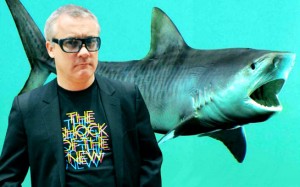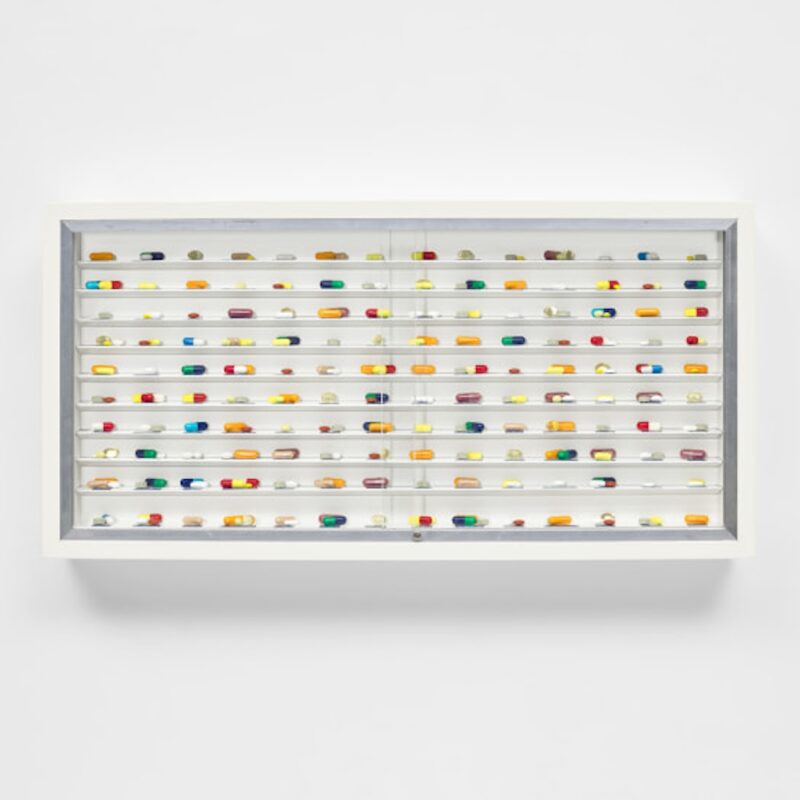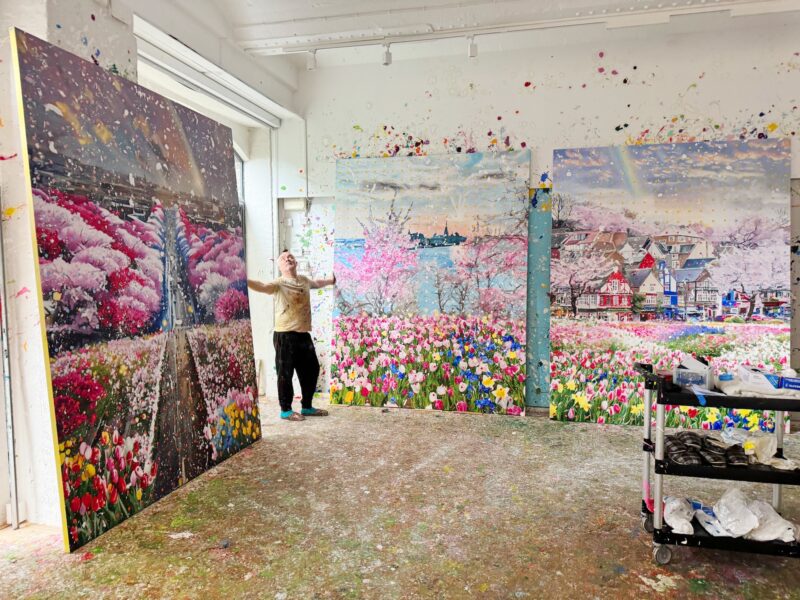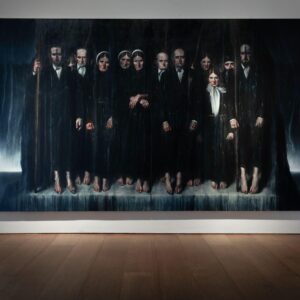
If Damien Hirst did not exist, it would be necessary to invent him. In the late 1980s, the London artworld, flooded with Koons, Kiefer and Schnabel, needed a glittering new star. There was a gaping chasm, which needed to be filled by someone who could act as the figurehead of a generation and compel the world to take notice of British art once again. And so Damien Hirst was fabricated from a plucky young stooge they found roaming the streets of Leeds.
Like all revolutionary moments, British art needed a leader who is clever enough to feign the requisite authority but stupid enough to be taken along for the ride as the public face of a grand master plan. Less extreme than a conspiracy theory that Hirst was invented is the counterfactual speculation that anyone who was at Goldsmiths in the 80s, entirely by chance and blissfully without reason, could have spearheaded the movement. Indeed, Jonathan Gibbs has written a novel predicted on precisely this notion, where he imagines that Hirst was hit by a train and killed when drunk, so another young artist named Randall happened to be the one who headed up the YBAs. In this narrative, Hirst is a ‘tragic lost figurehead’, but it hardly matters who was at the helm, for the fact is that British art was to have its moment right there and right then.
While it is possible to imagine a world without Damien Hirst, it is not possible to imagine the artworld that we now have without some such character as the prime mover in a game of spectacle and money that we affectionately call contemporary art. On the one hand, the economic situation in Britain at the time and the fortunate meeting of figures like Hirst and Jay Jopling are chance occurrences. But on the other hand, the way that these events proved so epoch-making changing the trajectory of art and culture in Britain possess the air of divine intervention.
The story of the YBAs is the genesis of the great fable that is the contemporary artworld. It is so often told that the distinctions between myth and reality are blurred by blithe romanticism about the past and the stark reality of the present. It possesses the charm and orthodoxy of a creation myth in the way that it functions as the standard explanation for the existence of the London artworld in which we now live and work.
The YBAs precipitated the great art bubble that we are currently witnessing, with its astronomical prices and artist studios that behave like manufacturing corporations. But the art historical precedent was set by Warhol, who considerably widened the field of what art could be about by enveloping the everyday and treating the making of art like the production of consumer goods. Warhol’s decisive moment was in 1964, when he showed his Brillo Boxes at New York’s Stable Gallery. It is here that Arthur Danto pinpoints what he calls ‘the end of art’: art, he says, entered a post-historical moment where anything goes because suddenly there was no perceptual difference between a work of art and a mere thing; art and reality collapsed upon one another so that it was up to philosophy alone to work out the difference. In this climate, art history as the arbiter of what counts as art had ended, and the distinctions between art, life, politics and economics would forever be blurred.
Nearly 40 years later, the YBAs internalised these lessons and took the opportunity afforded by recession to revitalise the artworld. It is difficult to see now – saturated as we are with images of the art and tales of misbehaviour – how revolutionary the YBAs were. They developed a form of conceptual art that had its roots in minimalism and pop art, but with an aesthetic which felt urgent, fresh and delectable to the time. The work they made was shocking, not just in its deliberate use of the grotesque, but in the way that at the time it felt genuinely new and relevant. Furthermore, they lived out Danto’s theory by making it appear as if the spectacle of celebrity was, after all, part of the art and not a mere consequence of it.
In addition to exemplary training at Goldsmiths and a few good ideas, there was a sense of everyone being in the right place at the right time. Britain was in the midst of recession and London’s artworld was confined to a few galleries in Cork Street, where art was a German or American phenomenon. There was a general malaise which was to be dispelled by the unlikely pairing of art and economics, where opportunities arose from a state of total desolation. London was blessed with the chance meeting of three individuals who together would turn around its fortunes: Damien Hirst, Jay Jopling and Charles Saatchi – capitalism’s holy trinity of the manufacturer, the seller and the consumer.
The result of this was that contemporary art became immensely popular in an unprecedented way, to the extent that artists became household names and regularly featured in the tabloid press. And whilst the art market revived, so too did the economy more generally, ushering in a new period of growth; in a sense, the political landscape of Britain changed in the 90s partly as a result of a change at the level of culture, headed up by the YBAs, aided and abetted by Britpop. The YBAs formed a new establishment in which the appetite for contemporary art was fuelled by a desire for luxury in times of woe, the steady rise of credit and an art that spoke unequivocally to the era.
The artworld of today is the direct descendant of the YBAs. They filled the welter left behind by a poverty of both art and politics, creating a miraculous situation that today we almost take for granted. They helped build the art market that funds so many commercial galleries and keeps contemporary art in the news. But more importantly, they opened radical possibilities for creative professionals to step beyond the fringes of society, making contemporary art relevant and valuable to society at large. It now seems so convenient a turn of events that one wonders if some mysterious divine force had masterminded it all along. It’s almost as if that boy from Leeds was sent to shake things up with a shark so that we could enjoy so much art and he was rewarded with a very big house in the country…
Words: Daniel Barnes







